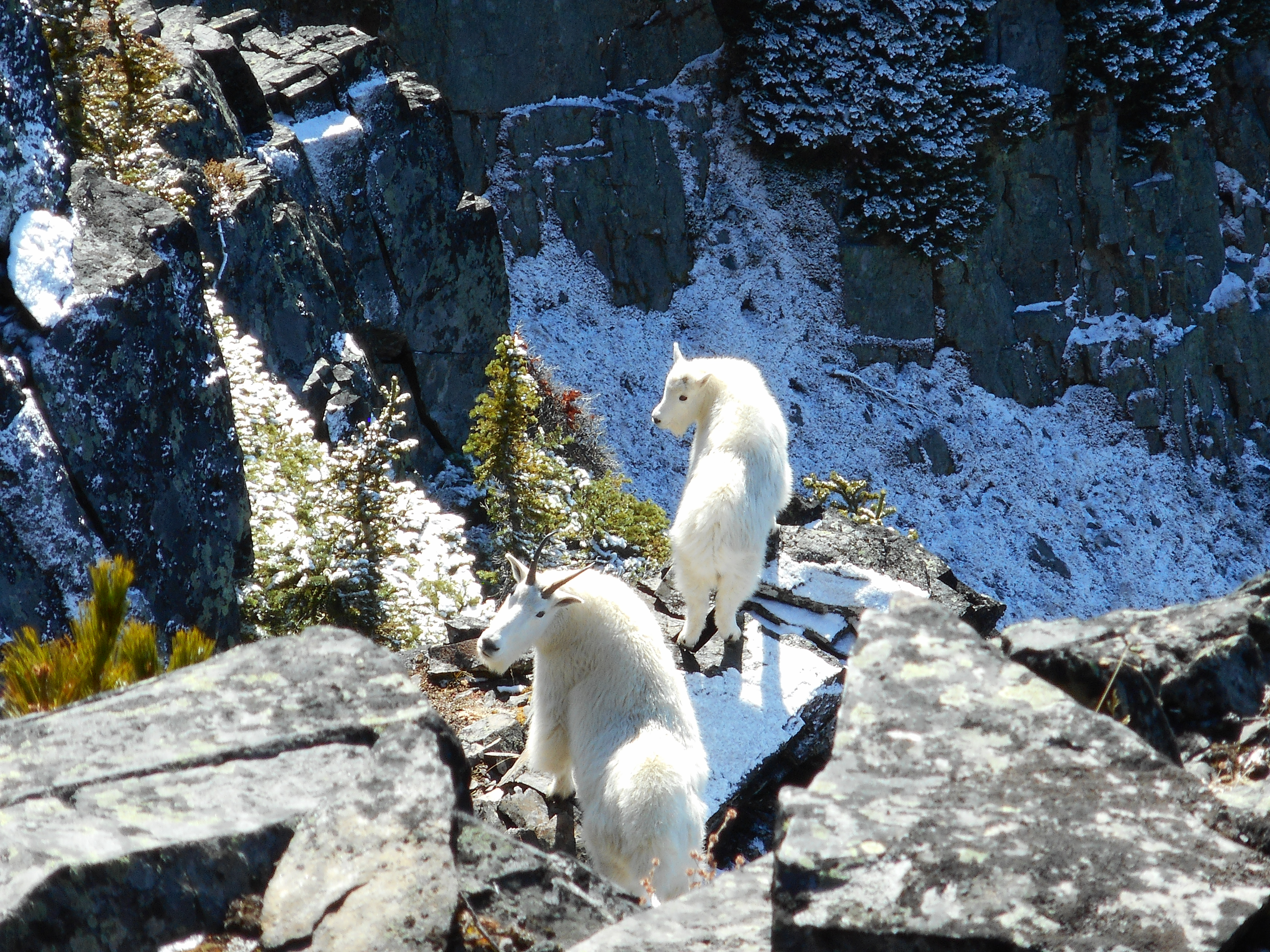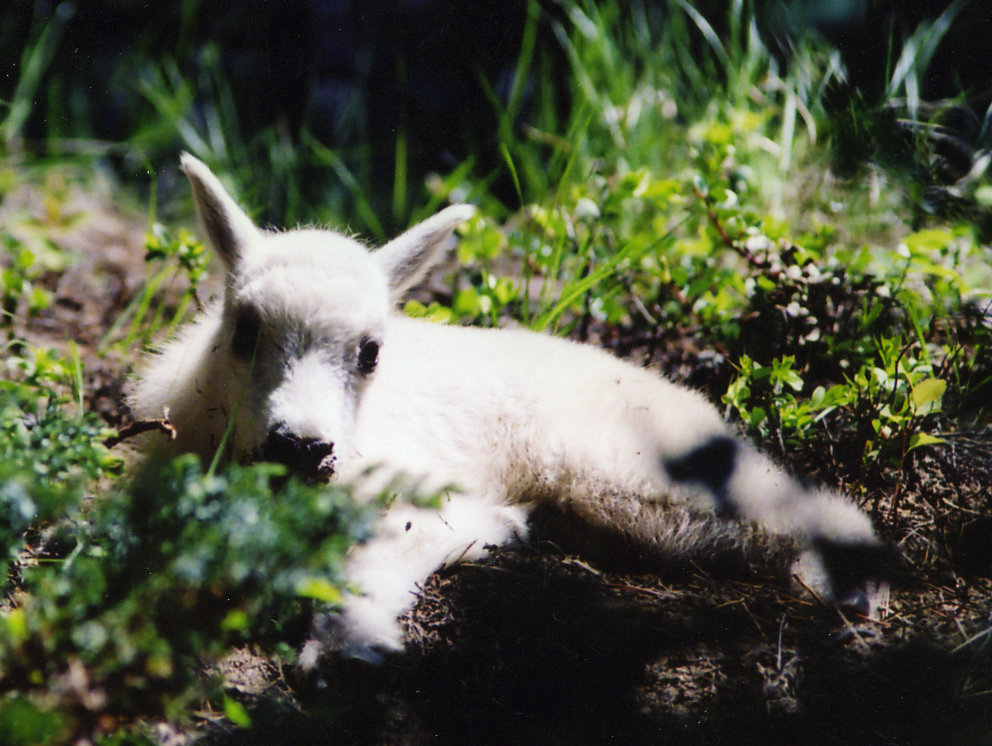Mountain goats are found in alpine areas from Colorado to Alaska. British Columbia is home to more than 50% of the worlds mountain goat population. They are actually not a true goat but antelopes.
Both male and female mountain goats have a long, thick white coat, especially around their shoulders and between their front legs, which is much longer in winter than in summer and a beard of long hair on their chin. They have huge forequarters and relatively thin, sharply-pointed, black horns that can be up to 1 feet long.
Their body size is not a definitive measure of sex as billies and nannies can be extremely difficult to tell apart and there are few sure indicators. Billies’ horns are more heavyset, with a smaller gap between horns at the base and a gradual curve to the tip, as well as a large pair of leathery glands at the base of each horn. Nannies’ horns are thinner, with a wider gap at the base and a sharp horn curve.
Nannies are often found in larger groups and accompanied by kids, whereas billies are often alone except for during the mating season in November where the billies join with the nannies.
The muscular forequarters seem out of proportion compared to the hind quarters, but is an adaptation for climbing mountains and pawing through snow. They are experts at climbing uphill but going downhill is more difficult for them. Their short legs are positioned close together and thier low centre of gravity allows them walk on extremely narrow ledges with poor footing. Mountain goats’ cloven hooves have rough-textured traction pads and their toes are also able to spread widely to distribute their weight over more ground, which make them highly specialized for rocky, slippery terrain.
Mountain goats are found on rocky cliffs and steep slopes in alpine or sub-alpine areas, generally in places sheep fear to tread.
In spring, mountain goats are living at lower elevations to take advantage of the first of green vegetation where they eat a variety of food and follow the snow melt in the summer and new growth upward, meaning they benefit from the most nutritious early stages of plants for several months. In summer and early fall to stay cool during the day most mountain goats graze at and above the timberline on the north side of mountain slopes and are more often seen on the warmer south slopes overnight or early in the morning. In the alpine, they feed on alpine swales and boulder meadows beside steep cliffs.


